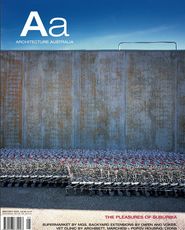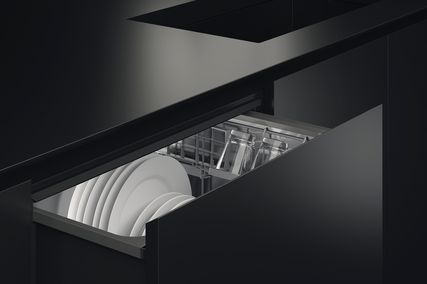RECENT DECISIONS BY the Federal Government regarding significant Australian buildings have caused me, and many in the architectural community, conflicting reactions of joy and delight, sadness and frustration. On behalf of the architectural community, I applaud the Federal Government’s announcement of National Heritage Listing for the Sydney Opera House. This welcome decision was long overdue, and is a natural progression of the nation’s acceptance and general understanding of the significance of this work. The Sydney Opera House is of national and international significance and deserves to be treasured accordingly.
The Federal Government’s simultaneous rejection of the Hydro Electric Commission Building in Hobart and the Cameron Offices in the Canberra suburb of Belconnen for National Heritage Listing is frustrating in the extreme. The RAIA recently nominated these buildings for listing through the Department of the Environment and Heritage.
The rejection of the Cameron Offices is especially disappointing, given the development pressure on the building and its possible demolition. This strong, forthright office complex is one of the most significant of its time and is one of the truly important examples in Australia of late-twentieth-century structuralism. John Andrews began the design in 1968, with construction completed in 1976. The design played a pivotal role in altering the thinking of the planners of Canberra, leading them to favour this approach to office accommodation. Cameron Offices is exemplary for its integrity, its heroic presence and ideological foundations. It is much admired by the architectural community for these very reasons, but is misunderstood or little appreciated by the broader community.
John Andrews was awarded the nation’s highest architectural honour, the RAIA Gold Medal, in 1980 for his significant body of work, including the Belconnen Offices. Other notable buildings in Australia include the American Express Tower, the Darling Harbour Convention Centre and the Woden Offices and Technical and Further Education College. John returned from Canada specifically to undertake the Cameron Offices project, and his presence in this country provided a stimulating influence for Australian architecture.
National Heritage Listing of a project of this significance, by an important and esteemed architect, which we believe meets all of the Government’s listing criteria, should be a “no brainer”. Frustratingly, it’s not.We go through the justification phase to safeguard such an obviously important part of our built environment heritage only to have that justification ignored. Sadly, we must watch our nation’s history and heritage being demolished or blancmanged piece-by-piece. It is ironic that Cameron Offices is one of only eight Australian places recognized on the UIA Register of Twentieth-Century Architectural Heritage.
A vocal, vigorous debate must be encouraged as to why it is that, as a nation, we archive and treasure our cultural heritage – our visual, verbal and written histories – but we seem oblivious to the effects of decimating the living, breathing built environment record of our nation’s development.
I’ll stretch the limits of credulity for a moment and compare our current frustration with, say, the literary world. The notion that one of our iconic authors – Patrick White, or historian Manning Clarke, for example – could have their original manuscripts assessed, found wanting and thrown into a back-lane compactor, because they were no longer relevant or understood by modern readers, seems totally fanciful and ridiculous. It shouldn’t, wouldn’t and couldn’t ever happen. The vocal outcry from all and sundry regarding the loss of our cultural heritage would be thunderous. But this is the very scenario being faced by our architectural community on a monotonously regular basis.
The RAIA will continue to plant its feet and fight to preserve our built environment heritage.We will continue to nominate worthy buildings that are of national significance and must be recognized as such.We will continue to prepare submissions to educate and inform government and the general public of the value of retaining these structures. The RAIA in late July lodged a submission titled “A New Vision for Built Heritage” to the Productivity Commission Inquiry into the Conservation of Heritage Places. I urge you to read it.
At the RAIA, we have many dedicated members and staff who are passionate about our built heritage and spend much of their time trying to safeguard and protect it. I encourage all of you to be vocal, and to join us in securing our past and future.
BOB NATION FRAIA
NATIONAL PRESIDENT RAIA















